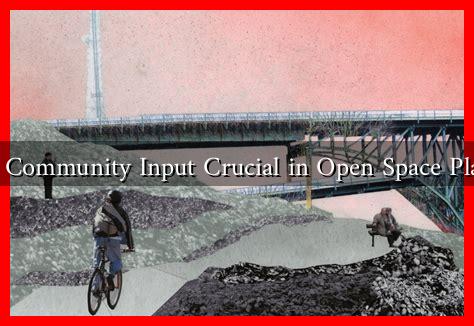-
Table of Contents
Why Is Community Input Crucial in Open Space Planning?
Open space planning is a vital aspect of urban development that focuses on creating and maintaining parks, greenways, and recreational areas. These spaces are essential for enhancing the quality of life in communities, promoting environmental sustainability, and fostering social interactions. However, the success of open space planning largely hinges on the involvement of the community. This article explores the importance of community input in open space planning, highlighting its benefits, challenges, and real-world examples.
The Importance of Community Input
Community input is crucial in open space planning for several reasons:
- Reflecting Local Needs: Community members have firsthand knowledge of their environment and can articulate their needs and preferences. This local insight ensures that open spaces are designed to serve the actual users effectively.
- Enhancing Community Ownership: When community members are involved in the planning process, they are more likely to feel a sense of ownership over the space. This can lead to increased stewardship and maintenance of the area.
- Promoting Inclusivity: Engaging diverse community voices ensures that the needs of various demographic groups are considered, leading to more equitable access to open spaces.
- Building Trust: Involving the community fosters transparency and trust between planners and residents, which is essential for successful long-term projects.
Case Studies: Successful Community Engagement
Several cities have successfully integrated community input into their open space planning, resulting in vibrant and well-utilized public spaces.
1. The High Line, New York City
The High Line is a prime example of community-driven open space planning. Originally an abandoned elevated railway, the project was transformed into a public park through the efforts of local residents and advocacy groups. Community input was solicited through public meetings and workshops, allowing residents to share their vision for the space. The result is a unique urban park that reflects the community’s desires and has become a model for similar projects worldwide.
2. The 606, Chicago
Another notable example is The 606 in Chicago, a 2.7-mile elevated trail that connects several neighborhoods. The planning process involved extensive community engagement, including surveys and public forums. Residents expressed their needs for safe walking and biking paths, green spaces, and recreational areas. The project not only revitalized the area but also fostered a sense of community among diverse groups.
Challenges in Community Engagement
While community input is essential, it is not without challenges. Some common obstacles include:
- Limited Participation: Engaging a diverse range of community members can be difficult, especially in areas with marginalized populations who may feel excluded from the planning process.
- Conflicting Interests: Different community groups may have varying priorities, leading to conflicts that can complicate the planning process.
- Resource Constraints: Planners may face budgetary and time constraints that limit their ability to conduct extensive community engagement.
Strategies for Effective Community Engagement
To overcome these challenges, planners can adopt several strategies:
- Utilize Technology: Online surveys and social media can help reach a broader audience and facilitate engagement, especially among younger demographics.
- Host Inclusive Events: Organizing community events that cater to various interests can encourage participation from different groups.
- Provide Incentives: Offering incentives, such as food or small prizes, can motivate community members to participate in planning discussions.
Conclusion
Community input is not just a checkbox in the open space planning process; it is a fundamental component that shapes the success and sustainability of public spaces. By reflecting local needs, enhancing community ownership, promoting inclusivity, and building trust, community engagement leads to open spaces that truly serve their intended purpose. As demonstrated by successful case studies like The High Line and The 606, when communities are actively involved, the results are transformative. Planners must prioritize community input to create vibrant, accessible, and sustainable open spaces that benefit everyone.
For more information on community engagement in urban planning, you can visit the American Planning Association.

